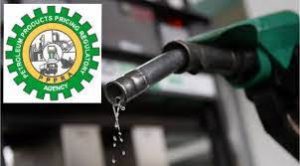Nigeria ramps up domestic LPG consumption above 1MMT, says PPPRA
January 20, 20211.2K views0 comments
By Tobias Pius
Nigeria’s Petroleum Products Pricing Regulatory Agency (PPPRA) has termed Nigeria’s domestic Liquefied Petroleum Gas (LPG) consumption as laudable following figures that clearly indicated a steady and sustained growth pattern, as 2020 saw LPG consumption for the first time in the nation’s history reach one million metric tonnes threshold following an appraisal of 2018, 2019 and 2020.
Read Also:
- Botched and bungled exercise that’s Nigeria’s 2025 budget
- Nigeria at 64, where individual comfort trumps national greatness (2)
- Inflation storm rages on in Nigeria as October rate hits 33.88%
- Nigeria’s inflation, cost of living crisis vs. minimum wage
- Nigeria's Asharami Synergy unveils reliable fuelling solutions
Abdulkadir Saidu, executive secretary of the agency, who disclosed this, laid out a comparison between years 2018 and 2019 where Nigeria’s recorded LPG consumptions of 635,452.061MT and 840,594.37 MT, indicating an increase of 60.5 per cent, and then growing into 2020’s figures, before pointing out how this domestic consumption milestone in 2020 has placed the country first in West Africa and as one of the leading LPG consuming nations on the continent.
He said: “With this laudable feat, the country is on track to meet the 5 million MT by 2022 target, set in the Nigeria Gas Policy (NGP) of 2017, which translates to an average of 1 million MT/year, provided we collectively sustain and ramp up intervention efforts and initiatives of the government and all stakeholders.”
This improvement has prompted Nigeria Liquefied Natural Gas (NLNG) Limited, to raise its 2021 allocation of LPG to the domestic market from 350,000MT to 450,000MT in order to aid the achievement of the goal.
Saidu also noted how the attainment of the one million MT domestic utilisation milestone serves as testimony to the progress achieved so far in ensuring the provision of alternative sources of fueling to Nigerians in place of the traditional petrol, diesel and kerosine, and altering the nation’s energy mix in favour of locally-available options.
Going forward, asides this recent transcending pattern of growth that has culminated in over one million metric tonnes of LPG, with its potential to create a healthier life for Nigerians through the provision of a cleaner source of energy for cooking and other domestic uses and even for vehicular transportation, the federal government continues to push for the further deepening of LPG penetration in the country, utilizing further avenues such as the identified 140 flare points by the Nigerian Gas Master Plan (GMP) that together flare above 1 Bscf/d, which could provide an additional 500,000 MT of Liquefied petroleum gas (LPG) for use.

